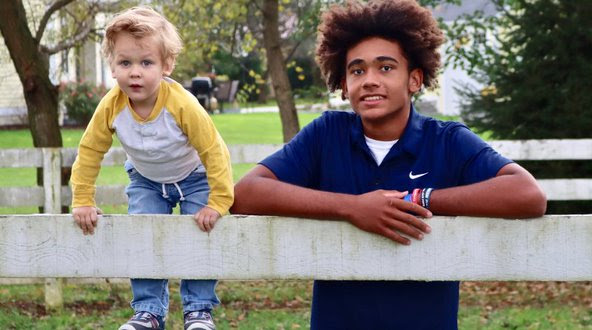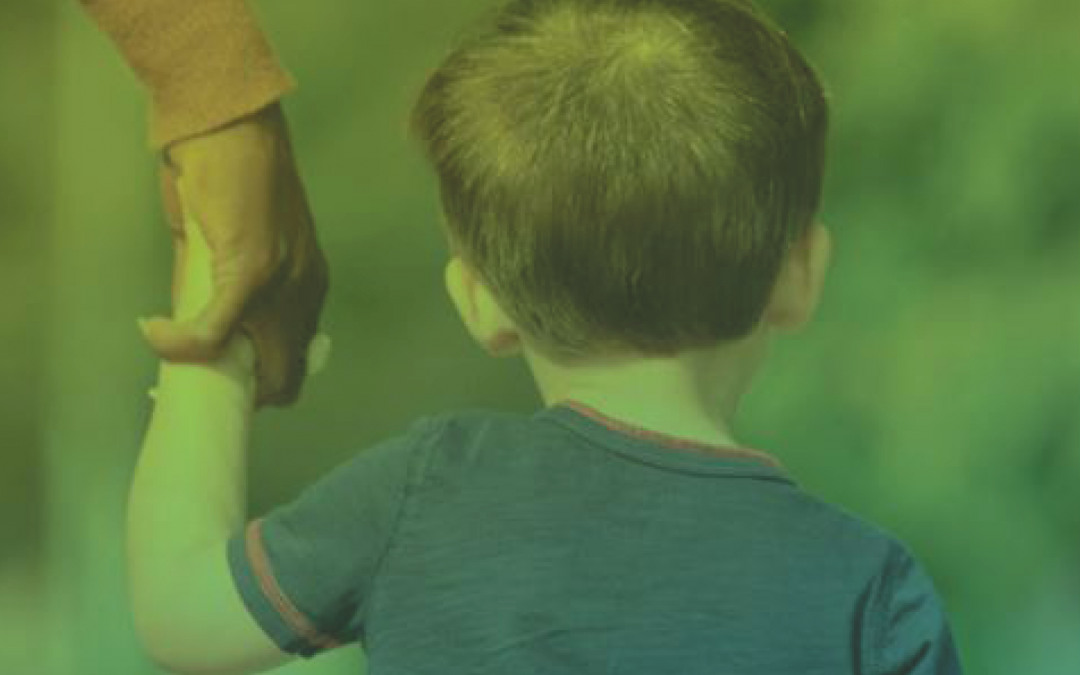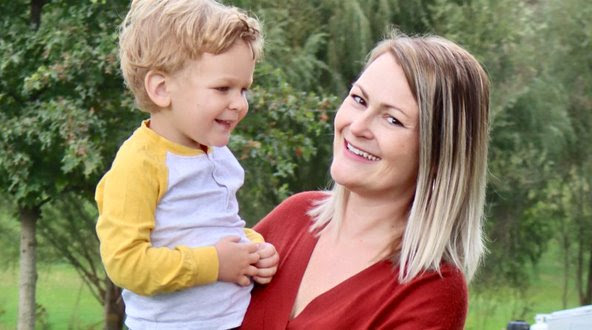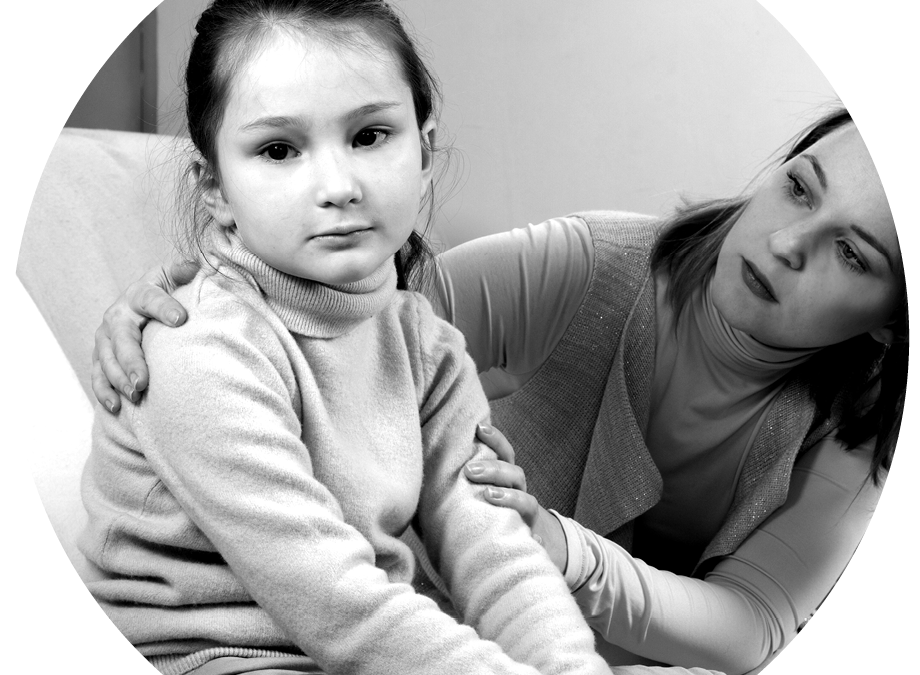
by Jessie Cooper | Nov 24, 2021
This past week I wrote to you about setting boundaries with our children. In my blog, I wrote about the importance of boundaries for the emotional development of children. I also wrote to you about my own struggles in setting boundaries as a mama. One of the main reasons I struggle with setting boundaries for my own children is the (out)bursts that come with it.
It just so happens that as a clinician one of my primary areas of specialization is problem behaviors (the bursts). It’s what I went to graduate school to study over a decade ago. Over 10 years later and I can tell you the science of reducing problematic behaviors hasn’t changed. My own journey applying clinical skills at home, of course, has not (well, not totally). Today I’d like to write to you about both.
ABA & Bursts
Let’s start at the beginning with ‘burst science.’ Applied Behavior Analysis teaches us that social behaviors, both positive and negative, can be broken into units that can be studied. In studying units of behavior, BCBAs are able to identify the function of behaviors (why behaviors occur) and missing skills in the child they are studying. When it comes to reducing problem behaviors, behavior analysts are looking for why the behavior is occurring. This involves looking at what is happening before the behavior and what happens after the behavior.
While studying the environment before bursts occur, BCBAs look for a deficit in the child’s environment. What are they missing? Studying environments after bursts allow BCBAs to see if the child’s problem behaviors filled the deficit. If they did, the child is successfully using the problem behavior to get their needs met. This means the problem behaviors are being reinforced and will continue to occur. Magic I’m telling you. Magic.
You see, by studying what a child is seeking in a specific environment you can create interventions that fill the child up with what they are seeking to immediately decrease the problem behaviors. This isn’t a long-term solution, but it creates a short-term solution to make the days easier for the child and their families. While the child is being satiated BCBAs work on teaching new skills surrounding the child’s needs. This always looks like teaching functional communication skills, how to ask for exactly what you need.
Sometimes teaching specific skills can look like teaching patience and tolerance to ‘no’ when what the child wants isn’t good for them to have all the time. For example, if a child is throwing tantrums to get access to candy it’s damaging to have non-contingent candy all of the time. But if a child is tantruming for positive attention, we can fill them up without having to teach tolerance to no. Though we might have to teach waiting because sometimes mama (or papa) is busy.
The key to this remedy is to also remove reinforcement when a child is using their problem behavior to get their needs/desires met. If, in the scenarios above, the BCBA is providing candy (one piece) every 30 minutes and within 15 minutes the child hits to get access to the candy the BCBA cannot give the child the candy. If they do they will reinforce the hitting and take the motivation away from using words. It is here, in this little sweet spot of the behavior intervention, that bursts occur. Let’s talk about that.
Why Do Bursts Occur?
Underneath the bursts for children (and adults… more on that later) is fear that their needs/desires won’t be met. The bursts occur because, in the child’s mind, that very thing they want could become unattainable, their need won’t be met, and they will have to experience negative emotions. Dealing with both the fear of a need/desire not being met alongside psychologically negative emotions is tough stuff for a child. This right here? This is the hard part for parents and the sweet spot for teaching emotional resilience and intelligence.
As a mama, I know firsthand how easy it is to give in. To not want to deal with the temper tantrum, the screaming, and the crying. We are human beings and crying children is not comfortable. When we give in as parents at a given moment it provides immediate relief to ourselves and our children. It also perpetuates the very behaviors we don’t want to see more of and does not teach our children how to deal with the big emotions.
About a year ago Henry and I were at Dametrius’s football game and Henry wanted candy from the concession stand. I had packed snacks and knew sugar was on the menu later so I didn’t want him to have extra candy. I leaned down and told my little son, “no, not now we’ll have dessert at dinner”. Of course, in public, a full-on tantrum occurred. At that moment I thought how perfectly aligned this example was. You see at that moment I could have made a concession at the concession stand by just giving in. If I gave in Henry would happily watch the game and I wouldn’t have to be teaching Henry to breathe and tell me how he feels. But giving in also meant teaching my son to numb his emotions with food and that screaming works. So I stood my ground and worked with Henry.
You see under the bursts, as we are teaching boundaries. As children burst, their hearts need to know they can ride through negative emotions and still be safe on the other side. That nothing bad comes from feelings and that needs can be met in new ways. To me, as a clinician, I know that working through the bursts creates long-lasting, positive, change. As a mama, teaching my children to ride what is underneath the bursts is more valuable than any concession I could make at any given moment.
Xoxo,
Jessie

by IABA Team | Nov 23, 2021
Applied behavior analysis (ABA) is such a broad ASD therapy approach making it difficult to define what a typical program will look like. The amount of therapy and level of parent involvement varies, often according to the specific needs of the child.
ABA skills training programs and techniques can require several hours each day. While skills training programs are usually implemented by behavior therapists or teachers, parents are often taught critical skills to help their children transfer what they have learned in therapy to everyday life, especially at home.
ABA skills training programs for young children are often based in the home and require special materials and a dedicated area for working. ABA behavior modification therapy may include 1-2 hours of parent training per week with the parents using strategies they learn in between visits. An ABA therapist may also consult with teachers to help support positive behaviors in the classroom.
Strong ABA Therapy Programs
Strong ABA programs will all be different, as they should be tailored to the individual needs of each client. That said, all strong programs will also have some similarities on a general level.
Supervision
The program should be designed and monitored by a Board Certified Behavior Analyst (BCBA) or someone with similar credentials. Supervisors should have extensive experience working with children with autism.
Training
All participants should be fully trained, with supervisors providing support, monitoring, and ongoing training for the duration of the program.
Programming
The program should be created after a detailed assessment has been conducted and tailored to the child’s specific deficits and skills. Family and learner preferences should be given consideration in determining treatment goals. Generalization tasks should be built into the program to ensure the performance of skills in multiple environments.
Functional Programming
The goals selected should be beneficial and functional to the individual and increase or enhance his/her quality of life. A mix of behavior analytic therapies should be used so that the child has an opportunity to learn in different ways.
Data Collection
Data on skill acquisition and behavior reduction should be recorded and analyzed regularly. This data should be reviewed by the supervisor and used to measure the progress of the individual and provide information for program planning.
Family Training
Family members should be trained in order to teach and reinforce skills. They should be involved in both the planning and review process.
Who Provides the Actual ABA Services?
The top certification board for an ABA therapist is a Board Certified Behavior Analyst (BCBA) and comes from the Behavior Analyst Certification Board. Further certification can be issued in the form of a BCBA-D, indicating the therapist has a doctoral degree. Another license is the BCABA, which means having an ABA education at the level of a bachelor’s degree.
Some ABA therapists may indicate they have several years of experience but are not BCBAs. Individuals in this position should not be providing services unsupervised. Only board-certified BCBAs should be overseeing programs and implementing therapy methods.
ABA Therapy from IABA Consultants
If you have questions regarding autism treatment, education, or plans using ABA therapy, we are here for you! Our goal is to make sure no family is turned away due to financial constraints. Our therapy team would love to talk to you. Find the location closest to you and give us a call. We’re here for you.
Sources
Autism Speaks

by Jessie Cooper | Nov 17, 2021
Last week I wrote to you about my own journey in boundary-setting as a business owner and woman. This week I’d like to dive deeper into boundaries and talk to you as both a mama and a clinician about boundaries on the home front.
As a clinician, not only do I have extensive knowledge about early childhood development but one of my areas of expertise is reducing disruptive and dangerous behaviors. I spent the first five years of my career in Applied Behavior Analysis working in early intervention and on crisis cases.
I can see my young self now, rested for the day, walking into a therapy session and teaching things like how to work through a tantrum. I worked with each family on their own values and expectations of their child, observed the needs the child was trying to get through their tantrums, and taught consistent consequences to the family as well as adaptive skills to the child. In the range of adaptive skills I often taught language (use your words), patience, tolerance to hearing ‘no,’ disappointment tolerance, and expression of feelings. Each family and child was unique but the structure of the treatment was similar and based on boundary setting.
Learning Boundary Setting as a Mom
Fast forward about 8 years to when I became a mama and my son Henry became a toddler. Henry was (and is) a strong-willed child. I remember writing in his baby journal “I didn’t know babies came out like you…” because Henry was (and is) so vocal about how he sees things and how he wants things done. As a mama, I tried to also be a BCBA and use the same tried and true treatment structure with Henry. State a boundary, follow through with the boundary, use your words, and teach new skills. Easy right? No. Hard no.
Throughout my journey into motherhood, while I love my boys above all else, I have struggled with both postpartum depression (Henry) and a toxic home environment because of domestic abuse. Toss in three boys who all have varied needs, wants, desires, and voices and the stress of setting boundaries felt impossible. You see, the thing with setting boundaries is that when you first set them children tend to resist them. Boundaries feel like a “no” to children (often they are) and the “no” feels like something for them to rebel against. As a parent, you have to be ready for the explosion as you set expectations. I’m going to be honest here; I could not weather the explosions so I became a, “yes mama”. Ugh.
Boundaries by Example
A year ago when I left domestic abuse my children & me. We were living in a psychologically frightening environment and I knew, no matter how much I wanted their dad to get help, that I couldn’t stay any longer. I set the boundary that I would not live in an abusive environment and modeled this incredibly important boundary for my children.
Yet as the last year passed my small children had so much change in their little worlds. While some of my “yes mama” tendencies went away, some remained. Want a new toy? Sure. One more piece of candy? OK. TV time? You got it. This also worked the other way and when my children behaved in ways I didn’t love (not staying in bed, dumping their food on the floor, screaming for things) I would spend time making empty threats (one more time and then…) and eventually give in. While home life was much calmer as a single mama and my children were happy with me, I knew I had to reset, buckle in, and teach boundaries.
You see, without boundaries children don’t know which behaviors are OK and which ones are not. Without boundaries, they don’t learn how to navigate unpleasant emotions and what to do with their unpleasant emotions. They also don’t learn how to behave in social situations and can become impolite, spoiled, and disruptive.
Keep in mind that little children are still children. It’s basically their job to overreact while testing boundaries early on. It’s our job as parents, however, to shape their behaviors in positive ways. Yes of course I want my children to be happy but I also want them to know how to navigate their own inner and outer worlds. Boundaries are the way to teach this.
Maintaining Boundaries
As the fall came so did a new peace in our home. I set some simple boundaries for the boys I knew I could follow through with and continued to teach them how to navigate their emotions. I spent time making sure the values I set were in alignment with my values and that I was ready for tantrums when they came. The boundaries I set were for good listening, respect, kindness, and understanding “no.”
My children have become calmer overall after the initial, “holy crap” boundary bursts. Boundaries tell them what is OK and what is not so they don’t have to guess or use tantrums to figure a given situation out. When they don’t like the answer they know we can hold space for them to be sad or mad. It’s a win-win.
Me? I have a ton of compassion for the woman I was in early motherhood and know I was doing the very best I could at the time. I also am incredibly grateful that I’m in a space to apply my clinical skills to mommyhood. One day (and boundary) at a time.
Xoxo,
Jessie

by IABA Team | Nov 11, 2021
ABA therapy is the only evidence-based ASD therapy, but the treatment only works if it is done with care. Not all ABA service providers are the same. How can you tell if your child’s treatment is being conducted correctly?
There are some red flags you can look for if you feel your child is not progressing or benefitting from ABA therapy. The points we are going to talk about won’t cover everything, but they will cover some of the most easily observable ABA therapy red flags.
We have split this article into two parts, as we want to mention why these red flags can be harmful and what you can do to notice them. Click here for part 1.
Not Listening
Every parent has concerns about their children. ASD parents usually have more things to be concerned about. If you have voiced specific major concerns to your child’s ABA provider without an acceptable response, you may need to rethink things.
By voicing major concerns we are talking about lack of progress, not sharing enough information, billing too many hours etc. These are things that should be addressed as soon as possible. Smaller concerns may slip through the cracks so you may need to repeat them in order to ensure they are taken seriously.
If all of your concerns go unaddressed by an ABA therapy provider, it may be time to look for a new one.
Only Using a Few ABA Therapy Techniques
Relying on a small pool of ABA therapy treatments and techniques can lead to a poorly developed program. If you notice your child is being treated with the same methods all the time, you may need to look at their overall program.
Some programs may focus on a small number of treatments for a set period of time, so be sure to ask when or if the program will change or progress. Your child’s ABA therapist should have a good answer why certain treatment methods are or aren’t being used.
All children with ASD are different, so be sure not to question a treatment program after a short amount of time. Have a discussion with your ABA provider to learn about the program that was designed for your child.
Templated ABA Therapy Programs
Similar to only using a few aba therapy methods, templated programs can be a major red flag for ABA programs. Every child with ASD is different and requires a different approach tailored to their strengths and needs.
This red flag can be seen relatively early in selecting an ASD treatment program or clinic. If you are presented with a brochure of programs or therapy ‘packages’ mentioned in a consultation, you need to really look at what is being offered.
In order to get the most out of ABA therapy, each child needs a custom-built program. ABA programs built on general needs will not help each child enough to address specific behaviors and needs.
ABA Therapy from IABA Consultants
If you have questions regarding autism treatment, education, or plans using ABA therapy, we are here for you! Our goal is to make sure no family is turned away due to financial constraints. Our therapy team would love to talk to you. Find the location closest to you and give us a call. We’re here for you.

by Jessie Cooper | Nov 10, 2021
Last week I wrote to you about integrity and my own personal experience in being unwilling to bend as a woman. I spoke about my experience not only as a businesswoman but also as a woman who has left domestic abuse and is walking through divorce. That, in my unwillingness to bend, I have had to grow a tougher skin in order to stand my sacred ground. That skin, or cloak if you will, represents my boundaries. My boundaries are how I protect myself, my work, my children, and my soul. My boundaries are also what shame has told me to ignore and each time I did I lost myself.
In writing to you about my unwillingness to bend, I also wrote to you about society’s general expectations that women should be docile and accommodating. That from a young age we are taught to put down what we actually need in order to please another person (males, teachers, adults, authorities, etc). With this social conditioning, there are no lessons on protecting your own worth, needs, and desires, leaving boundaries as never a topic that is never discussed.
Setting Boundaries Isn’t Selfish
For an incredible amount of time, I thought that boundaries were selfish, that when I placed a boundary on someone else who had a need or request I wasn’t serving humanity. Each time I placed a boundary and received backlash I measured my own worth against it. I thought that somehow my boundary was denying another person what they needed. It wasn’t until my experience leaving domestic abuse that I learned how life-saving boundaries are.
Just as many women are coming to find out that self-care isn’t selfish (I’m sure it’s a hashtag somewhere), I discovered that boundaries are also not selfish. In her work surrounding shame Brene Brown teaches us through her research that boundaries are actually compassionate. Compassionate to ourselves and the person with who we are setting boundaries. Boundaries tell us what we are willing to do in alignment with our own values (and person) and what we are not willing to do.
When a person does not respect boundaries it is not a reflection of the worth of the person setting the boundaries, it is a reflection of the person pushing your boundaries. Over the last year, I have learned that people pushing boundaries are expecting their happiness and “power,” to come from another person. Neither of these things can be true.
Boundaries & Happiness
You see, happiness is a choice we make. It is a sacred emotion that lives in our own hearts that only blooms when we remain true to ourselves. Without knowing what makes our hearts glow warmly it is impossible to know what makes us happy. Without knowing what can harm us it is also impossible to be happy. Boundaries are a lifeline to our happiness and hearts. They protect our souls.
Control is a perceived human condition, when we seek to control another person or outcome we have lost trust. We have decided that the world is hostile and that people cannot be trusted. That we must control the enemy, who is taking away our happiness so that our life can be fulfilled. Control over another human being is always about taking and never about true happiness.
As a woman, a business owner, and a survivor I have lived in both of these worlds for too long. Thinking it was somehow my job to make others happy before myself. Thinking that when someone wanted something from me (personally or professionally) it was my job to give it to them. In the biggest lesson in my life, I learned domestic abuse breaks your boundaries in a way where you lose yourself. Gaslighting was a constant theme in all of these scenarios, scenarios that were telling me I was crazy when I did not give in.
Here is what I have learned to be true in a year of healing. Boundaries are a lifeline. Whenever you do not know what to do, how to respond, or who to be in a relationship with, consult your personal values. Then, after you truthfully consult your values, you can insert a boundary. When you insert a boundary that is aligned with your values you will be at peace even if others are not. When others tell you they are uncomfortable because you have drawn a line in the sand you will be strong enough to withstand it. You will be strong enough to know that being at home in your own heart is all the strength you need.
Start Setting Your Boundaries
I have a list of boundaries I lean on now. If you don’t know where to start with boundary-setting, feel free to use a few as you put these lifelines in place for yourself:
- I will not make an excuse for harmful behavior
- I will not excuse my own harmful behavior
- My children and I come first
- I will not go against my personal values or needs to please someone else
- I will not be involved with someone whose words and actions do not align with my own
- I will not be in a relationship where I am not cared for, loved, and respected
Xoxo,
Jessie






